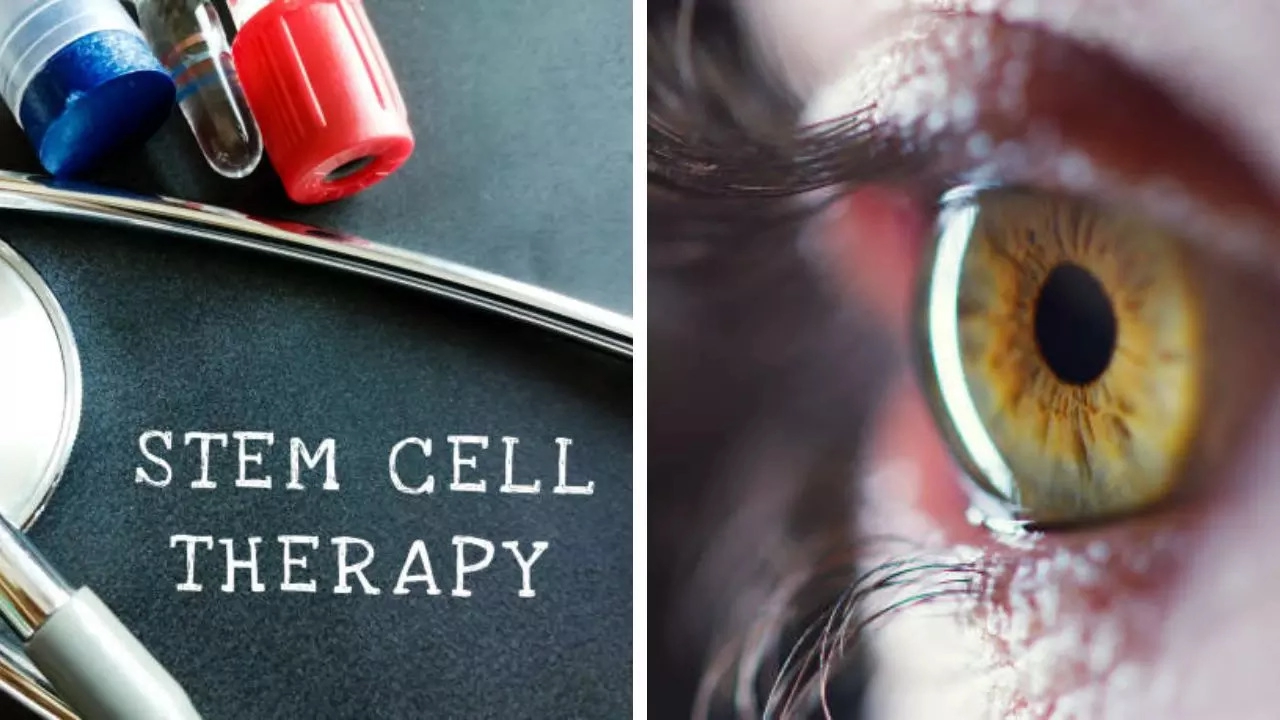Ashima Sharda Mahindra • 04 Oct 2024
Breakthrough Stem Cell Therapy May Repair Vision-Robbing Holes In Retina

Macular holes cause blurred vision, making it hard to see fine details, read, or drive a car – and can lead to permanent blindness as well
Stem Cell Treatment For Vision Loss: Transplants from human stem cells have successfully closed a hole in part of a monkey's retina, hoping for a similar therapy in humans, according to a study by Japanese researchers. According to the scientists from Kobe City Eye Hospital, the study could pave the way for better treatment of small gaps that form in the macula, the central part of the eye's retina.
These macular holes cause blurred vision, making it hard to see fine details, read, or drive a car – and can lead to permanent blindness as well. "Our results suggest that this method could become a practical, safe, and effective treatment option with minimal invasive risks, particularly for difficult macular hole cases," said Dr. Michiko Mandai, senior study author of Kobe City Eye Hospital.
Even though it has been a success, most scientists say the results of research in animals do not always pan out in people.
Retina transplants do not necessarily restore vision
In a retina transplant, a surgical procedure replaces damaged or diseased retinal tissue with healthy donor tissue. Doctors say the goal is to prevent blindness and improve the quality of life for people with retinal disorders. However, even with the advancement of treatment over the past decade successfully closing more than 90 per cent of macular holes, many cases have been negative, as even managing care after surgery is difficult. While retina transplants are able to close the holes, they do not necessarily improve vision.
And so, Dr. Mandai's team hopes the transplant of human stem cells may be able to overcome these obstacles.
In the study, published in the journal Stem Cell Reports, the team successfully transplanted retinal tissue derived from human stem cells to close a macular hole in a monkey's eye. The transplant grafted successfully and developed the light-detecting retinal cells essential for clear sight. Researchers said they also saw improvements in the monkey's responses to light and eye fixation.
Usually, retinal transplants can be performed by transplanting the donor retina into the macula - the central part of the retina that's used for detailed reading and central vision or transplanting the fetal retina, where the sheets of fetal retina can be transplanted into the subretinal space.
The initial transplant was full of glitches
According to Dr. Mandai, the experiment initially had a lot of issues, as the monkey had mild transplant rejection - which affected the integration of the grafted tissue. However, later the scientists were able to control it with steroid shots.
"The mild rejection may have limited the functional integration of the transplanted tissue," Mandai said in a journal news release. "Additionally, this was a single-case result for one eye, and the model did not exactly replicate the pathology of human refractory macular holes," she added.
According to Dr. Mandai, the findings suggest that the technique would be feasible for treating people.
Get Latest News Live on Times Now along with Breaking News and Top Headlines from Health and around the world.